Choosing the right car cover size is essential for optimal protection and fit. This guide provides a comprehensive overview of car cover sizes‚ types‚ and selection tips to ensure your vehicle is perfectly covered‚ protecting it from environmental elements and extending its lifespan. Proper sizing ensures maximum protection‚ durability‚ and ease of use‚ making it a crucial step in maintaining your car’s condition.
1.1 Importance of Choosing the Right Car Cover Size
Choosing the right car cover size is crucial for ensuring optimal protection and a proper fit. A well-fitted cover prevents damage from environmental elements like rain‚ UV rays‚ and dust‚ while also reducing wear and tear. It ensures the cover stays securely in place‚ even in windy conditions‚ and provides full coverage for all vehicle surfaces. A correctly sized cover also enhances durability‚ as it avoids stretching or sagging that can lead to material degradation. Ultimately‚ the right size guarantees ease of use and maximizes the protective benefits of the car cover‚ making it a vital step in maintaining your vehicle’s condition.
1.2 Overview of Car Cover Types and Sizes
Car covers come in various types and sizes to accommodate different vehicle models and needs. Universal covers offer a one-size-fits-all solution‚ while custom-fit covers are tailored for specific makes and models. Sizes range from compact cars to full-size trucks‚ ensuring a precise fit. Additional features like mirror pockets‚ elastic hems‚ and reinforced grommets enhance functionality. Materials vary from lightweight fabrics for mild weather to heavy-duty options for extreme conditions. Understanding the differences in types and sizes helps car owners select the most suitable cover for their vehicle‚ ensuring optimal protection and a secure fit.

Understanding Car Cover Sizes
Car cover sizes vary to fit different vehicles‚ ensuring proper protection and a snug fit. Understanding dimensions‚ materials‚ and vehicle-specific features helps in selecting the ideal cover size accurately.
2.1 Standard Car Cover Sizes and Dimensions
Standard car cover sizes are designed to fit most vehicles‚ with dimensions varying based on the car’s length‚ width‚ and height. Typical sizes range from compact cars (14-16 feet) to full-size SUVs (18-20 feet). Covers are usually made from durable materials like polyester or canvas‚ ensuring weather resistance and longevity; Custom-fit options are also available‚ offering precise measurements for specific makes and models. Proper sizing ensures the cover stays secure‚ protecting against dust‚ UV rays‚ and moisture. Always measure your vehicle accurately to select the correct size for optimal protection and ease of use.
2.2 Why Car Cover Size Matters for Protection
A properly fitting car cover is crucial for effective protection. A cover that is too small may leave parts of the vehicle exposed‚ while one that is too large can sag or blow away in the wind. The right size ensures full coverage‚ shielding your car from dust‚ UV rays‚ rain‚ and snow. It also prevents moisture buildup and reduces the risk of scratches from wind-blown debris. A well-fitting cover stays securely in place‚ providing long-lasting protection and maintaining your car’s exterior condition. Proper sizing is essential to maximize the lifespan of both the cover and your vehicle.
2.3 Factors to Consider When Selecting a Car Cover Size
When selecting a car cover size‚ consider your vehicle’s dimensions‚ including length‚ width‚ and height. The make and model can influence size due to unique shapes or features. Additional elements like side mirrors‚ antennas‚ and spoilers may require extra coverage. Material choice is also important based on weather conditions. A breathable fabric is ideal for preventing moisture buildup‚ while heavier materials may be needed for extreme weather. Proper fit ensures the cover stays secure‚ protecting your car effectively without sagging or blowing away. These factors help you choose a cover that provides optimal protection and longevity for your vehicle.
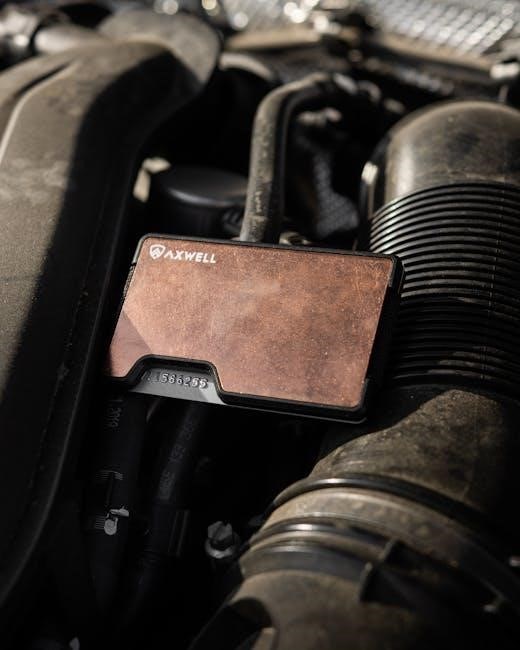
Measuring Your Car for the Perfect Fit
Measure your car’s length‚ width‚ and height accurately. Include any additional features like mirrors or spoilers to ensure the cover fits perfectly and provides full protection.
3.1 Step-by-Step Guide to Measuring Your Vehicle
To ensure the perfect fit‚ start by measuring your car’s length from the front bumper to the rear bumper. Next‚ measure the width at the widest point‚ typically across the doors. Measure the height from the ground to the highest point of the roof. Include any additional features like side mirrors or spoilers. Use a flexible tape measure for accuracy. Record all measurements and compare them to the car cover size chart. Double-check your measurements to avoid errors and ensure the cover fits snugly‚ providing complete protection without being too tight or loose. This step is crucial for optimal coverage and durability.
3.2 How to Determine the Correct Car Cover Size from Measurements
Once you have your vehicle’s measurements‚ compare them to the manufacturer’s size chart to find the best fit. Consider the car’s type (sedan‚ SUV‚ truck) and any additional features like spoilers or mirrors. Add a few inches to each measurement for a snug but not overly tight fit. Ensure the cover extends fully over the windshield and roof for maximum protection. If your measurements fall between sizes‚ opt for the larger one. Double-check the dimensions against the product description to confirm compatibility. This ensures the car cover provides full coverage and stays securely in place‚ even in windy conditions.

Car Cover Sizes by Vehicle Type
Different vehicles require tailored sizes: sedans (medium)‚ SUVs (large)‚ trucks (extra-large)‚ and luxury cars (custom-fit). Electric vehicles follow similar sizing based on their dimensions.
4.1 Car Cover Sizes for Sedans
Sedans typically range from compact to full-size‚ requiring car covers sized between 14 to 17 feet in length. Compact sedans (e.g.‚ Honda Civic) fit well with covers designed for smaller vehicles‚ while mid-size and full-size sedans (e.g.‚ Toyota Camry or Ford Taurus) need larger covers. Always measure your car to ensure the best fit. Sedan covers often include features like elastic hems for a snug fit and reinforced UV protection. Custom-fit options are available for specific makes and models‚ providing optimal coverage and protection from dust‚ UV rays‚ and weather conditions.
4.2 Car Cover Sizes for SUVs and Crossovers
SUVs and crossovers generally require car covers sized between 15 to 20 feet in length‚ accommodating their larger frames; Compact models like the Honda CR-V fit smaller covers‚ while full-size SUVs like the Chevrolet Tahoe need larger ones. Custom-fit options ensure precise fitment‚ especially for vehicles with unique shapes or add-ons. Features like elastic hems and reinforced pockets for mirrors and antennas enhance protection and fit. Always measure bumper-to-bumper‚ including any roof racks or spoilers‚ to select the ideal cover. Proper sizing ensures optimal protection from weather and debris‚ maintaining your SUV’s condition.
4.3 Car Cover Sizes for Trucks
Trucks require larger car covers‚ with sizes ranging from 18 to 24 feet for mid-size to heavy-duty models. Compact trucks like the Ford Ranger fit smaller covers‚ while larger models such as the Ford F-250 need extra-large options. Measure from bumper to bumper‚ including the bed and cab‚ to ensure proper fitment. Custom-fit covers are ideal for trucks with unique features like roll bars or toolboxes. Look for heavy-duty materials and elastic hems for secure coverage. Proper sizing ensures full protection for both the truck and any add-ons‚ maintaining its condition and longevity. Always verify measurements before purchasing.
4.4 Car Cover Sizes for Luxury and Sports Cars
Luxury and sports cars often require tailored car covers due to their unique dimensions and design features. These vehicles may have longer hoods‚ curved body lines‚ or spoilers‚ which demand precise sizing. Compact luxury cars like the Mercedes-Benz C-Class typically fit covers designed for mid-size sedans‚ while larger models such as the BMW 7 Series need larger sizes. Sports cars‚ like the Porsche 911‚ may require smaller‚ contoured covers to fit their low profiles. Always measure carefully‚ as luxury and sports cars often have specific fitment needs to ensure proper coverage and protection without compromising style or functionality. Custom-fit options are highly recommended.
4.5 Car Cover Sizes for Electric and Hybrid Vehicles
Electric and hybrid vehicles generally fit into standard car cover sizes‚ but some models may have unique dimensions due to battery placement or aerodynamic designs. For example‚ compact hybrids like the Toyota Prius often fit covers designed for small sedans‚ while larger EVs like the Tesla Model S may require premium sizes. Always measure your vehicle to ensure a proper fit‚ as slight variations in length or width can affect coverage. A snug fit is crucial to protect sensors‚ charging ports‚ and other exterior features. Custom-fit options are ideal for ensuring full protection without compromising on style or functionality.

Specialized Car Cover Sizes
Specialized car covers cater to unique vehicle types‚ ensuring a tailored fit for classic‚ vintage‚ or oversized cars‚ with materials and designs suited to their specific needs.
5.1 Car Cover Sizes for Classic and Vintage Cars
Classic and vintage cars often require specialized car covers due to their unique dimensions and shapes. These vehicles may have longer hoods‚ curved lines‚ or distinct features that standard covers don’t accommodate. To ensure a proper fit‚ precise measurements are essential‚ focusing on length‚ width‚ and any protruding elements. Many manufacturers offer custom-fit options for popular classic models‚ while others provide universal sizes with adjustable straps. Breathable materials are recommended to protect delicate paint and finishes. Always opt for covers designed specifically for vintage cars to maintain their timeless appeal and safeguard against dust‚ UV damage‚ and moisture.
5.2 Car Cover Sizes for Oversized Vehicles
Oversized vehicles‚ such as large trucks‚ RVs‚ or buses‚ require car covers specifically designed to accommodate their larger dimensions. These covers are typically made with heavier-duty materials to provide ample coverage and protection. When selecting a cover for an oversized vehicle‚ precise measurements are crucial‚ including length‚ width‚ and height. Look for options with elastic hems or adjustable straps to ensure a secure fit. Some manufacturers offer custom-fit covers for specific oversized vehicle models‚ while others provide universal sizes with extra fabric for larger vehicles. Always prioritize durability and weather resistance to safeguard your investment.
5.3 Car Cover Sizes for Convertibles
Convertible car covers are tailored to fit vehicles with soft tops‚ ensuring protection without compromising style. These covers often feature reinforced stitching around the soft-top area to prevent stretching or damage. They are designed to accommodate the unique shape of convertibles‚ with contoured cuts for side mirrors and antennae; Look for covers with elastic hems to secure the fit and prevent wind damage. Many convertible covers also include breathable materials to prevent moisture buildup. Ensure the cover aligns with your vehicle’s make and model for an optimal fit‚ as universal sizes may not account for the convertible’s specific design elements.
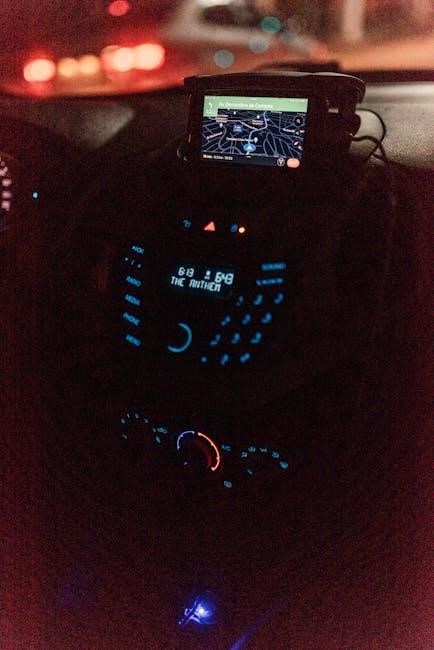
How to Choose the Right Car Cover Size
Choosing the right car cover size involves measuring your vehicle accurately‚ consulting size charts specific to your car’s make and model‚ and ensuring a snug fit.
6.1 Matching Your Car’s Make and Model to the Cover Size
Matching your car’s make and model to the cover size ensures a precise fit‚ optimizing protection and appearance. Different manufacturers design vehicles with unique dimensions‚ so a one-size-fits-all approach doesn’t work. Consult the car cover size chart specific to your vehicle’s brand and model to find the ideal fit. Many cover manufacturers provide detailed sizing guides tailored to popular makes like Toyota‚ Ford‚ or BMW. Additionally‚ consider the year of your car‚ as designs and dimensions may vary across model generations. A cover designed for your exact vehicle ensures proper coverage and avoids baggy or tight spots.
6.2 Considering Additional Features Like Mirror and Antenna Covers
When selecting a car cover‚ consider additional features like mirror and antenna covers for a tailored fit. These elements ensure that protruding parts are fully protected‚ preventing damage from debris or weather. Some car covers come with elasticized pockets for side mirrors‚ while others offer detachable covers for antennas. For vehicles with oversized mirrors or unique antenna designs‚ look for covers with adjustable straps or customizable fittings. These extra features enhance protection and maintain your car’s appearance. Always check product descriptions or manufacturer guides to confirm compatibility with your vehicle’s specific features for optimal coverage and functionality.
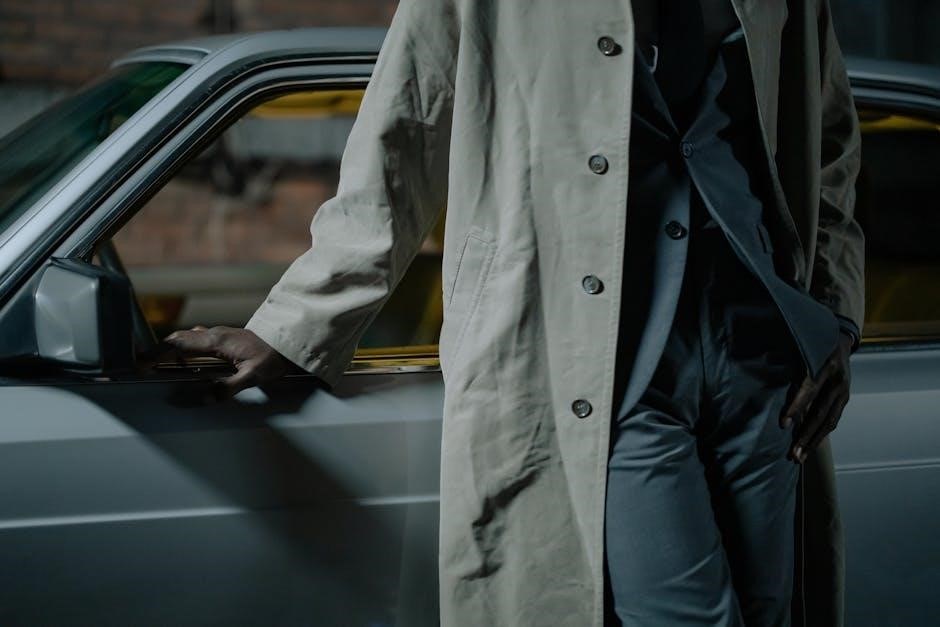
Impact of Car Cover Size on Protection
A properly fitted car cover maximizes protection by eliminating gaps and ensuring tight coverage‚ while an ill-fitting one may leave areas exposed to damage.
7.1 How a Properly Fitted Cover Enhances Protection
A properly fitted car cover ensures comprehensive protection by snugly wrapping around the vehicle‚ preventing dust‚ UV rays‚ and moisture from reaching the surface. It stays securely in place‚ even in windy conditions‚ reducing the risk of damage from debris. A well-fitted cover minimizes gaps‚ ensuring all areas‚ including mirrors and antennas‚ are safeguarded. This precise fit also prevents the cover from shifting‚ which could cause friction and scratches. By tailoring the cover to the car’s exact dimensions‚ it provides optimal defense against environmental elements‚ preserving the vehicle’s exterior and maintaining its appearance over time. Proper fit is essential for maximum protection and durability.
7.2 The Risks of Using an Incorrectly Sized Car Cover
Using an incorrectly sized car cover can lead to poor protection and potential damage. A cover that is too small may leave parts of the vehicle exposed‚ while one that is too large can flap in the wind‚ causing abrasions. Ill-fitting covers may not stay securely in place‚ allowing dust‚ dirt‚ and moisture to accumulate. This can lead to scratches‚ fading‚ or rust over time. Additionally‚ an oversized cover may bunch up‚ creating areas where water can pool‚ further damaging the paint or exterior surfaces. Incorrect sizing compromises the cover’s ability to provide effective protection‚ risking long-term damage to the vehicle.
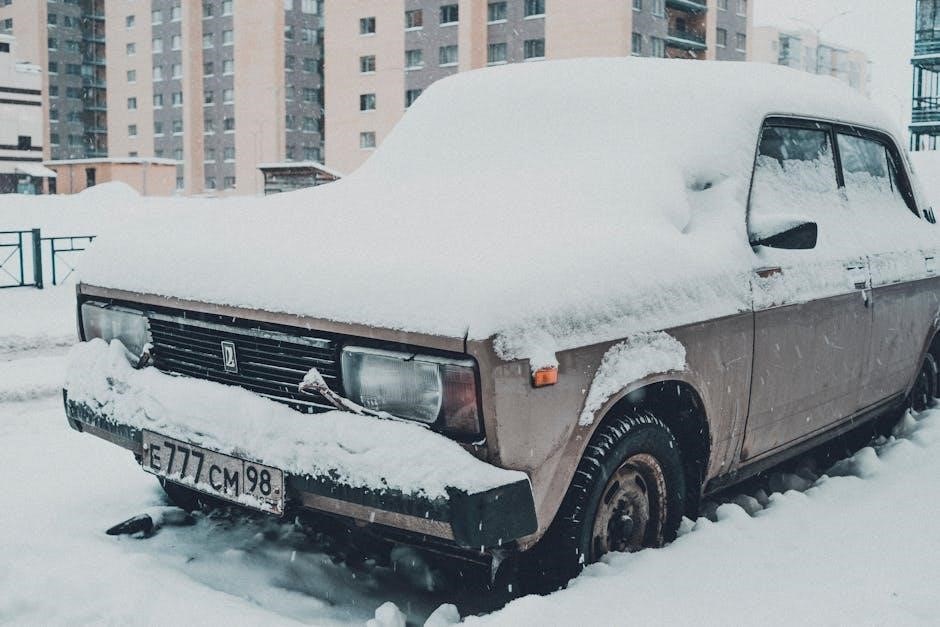
Car Cover Size and Durability
A properly fitting car cover ensures optimal durability by preventing stretching‚ flapping‚ and abrasion. A snug size reduces wear from wind and movement‚ extending the cover’s lifespan.
8.1 How the Right Size Affects the Longevity of the Cover
A car cover that fits perfectly ensures maximum longevity by minimizing strain on the fabric. Proper sizing prevents excessive stretching‚ which can lead to tears and fraying over time. When a cover is too tight‚ it risks abrasion from sharp vehicle edges‚ while a loose fit may allow wind to flap the material‚ causing wear. Additionally‚ a well-fitting cover reduces moisture accumulation‚ preventing mold and mildew that can degrade the material. By ensuring the cover stays securely in place without unnecessary tension‚ the right size enhances durability and maintains the cover’s protective qualities for years to come.
8.2 Material Thickness and Size Compatibility
Material thickness plays a crucial role in the durability and effectiveness of a car cover‚ but it must be paired with the correct size. Thicker materials‚ like heavy-duty waterproof fabrics‚ offer superior protection but may require precise sizing to avoid a tight fit that could stretch or tear the cover. Conversely‚ thinner materials‚ ideal for indoor use‚ need proper sizing to ensure they drape smoothly without sagging. Compatibility between material thickness and size ensures optimal fit‚ preventing damage to both the cover and the vehicle. Proper alignment enhances protection and extends the cover’s lifespan.
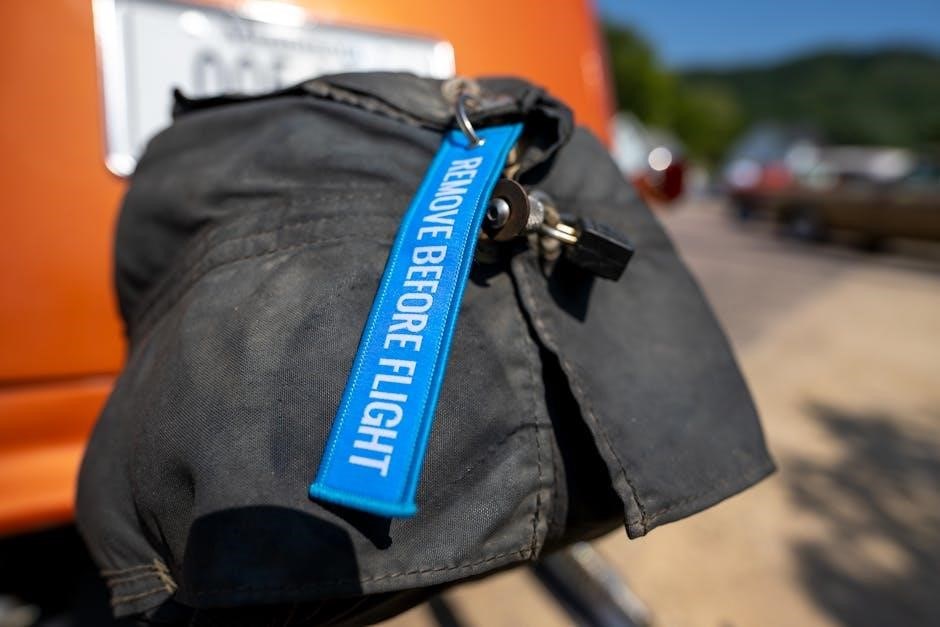
Common Mistakes When Selecting Car Cover Sizes
Common mistakes include overlooking specific vehicle dimensions‚ ignoring additional features‚ and not considering material compatibility‚ leading to a poor fit and reduced protection effectiveness.
9.1 Assuming One Size Fits All
One of the most common mistakes when selecting a car cover is assuming that one size fits all vehicles. This misconception can lead to a poor fit‚ reducing the cover’s effectiveness. Cars vary significantly in size‚ shape‚ and features‚ so a universal size cannot accommodate these differences. For instance‚ a cover designed for a compact sedan may not fit an SUV or a truck. Additionally‚ features like spoilers‚ antennas‚ or side mirrors may require specific cover designs. Always check the manufacturer’s size chart or measure your vehicle to ensure the best fit and optimal protection.
9.2 Not Accounting for Additional Vehicle Features
One common mistake is not accounting for additional vehicle features when selecting a car cover. Spoilers‚ antennas‚ side mirrors‚ and roof racks can affect the fit. Ignoring these details may result in a cover that is too tight or too loose‚ compromising protection. For example‚ a car with a large spoiler may require a cover with extra material to accommodate it. Similarly‚ vehicles with roof racks need covers designed to fit around them. Failing to consider these features can lead to poor coverage‚ reduced durability‚ and potential damage to the car or cover. Always measure and account for all unique features.

Tips for a Perfect Fit
For a perfect fit‚ double-check measurements‚ ensure the cover accommodates all vehicle features‚ and consider additional accessories like mirror and antenna covers.
10.1 Double-Checking Measurements Before Purchase
Double-checking measurements ensures a perfect fit‚ preventing damage and promoting durability. Measure the car’s length‚ width‚ and height accurately‚ including mirrors and antennas. A proper fit avoids sagging or tightness‚ which can cause abrasions or poor protection. Use a tape measure and record dimensions carefully. Compare these with the cover’s specifications to confirm compatibility. If unsure‚ consult sizing charts or contact manufacturers. Accurate measurements reduce the risk of returns or exchanges. A well-fitting cover enhances protection‚ appearance‚ and longevity‚ making it essential to verify before purchase; This step ensures optimal performance and satisfaction with the car cover.
10.2 Reading Reviews for Size Accuracy
Reading reviews is crucial for ensuring size accuracy when selecting a car cover. Customers often share insights about how well a cover fits specific models‚ highlighting any discrepancies between advertised sizes and real-world performance. Reviews can reveal whether a cover tends to run large or small‚ helping you make informed decisions; Pay attention to feedback from owners of similar vehicles to gauge compatibility. This step reduces the likelihood of ill-fitting covers and enhances satisfaction. By leveraging others’ experiences‚ you can confidently choose the right size‚ avoiding potential returns or exchanges. Reviews provide valuable‚ firsthand information for a precise fit.



